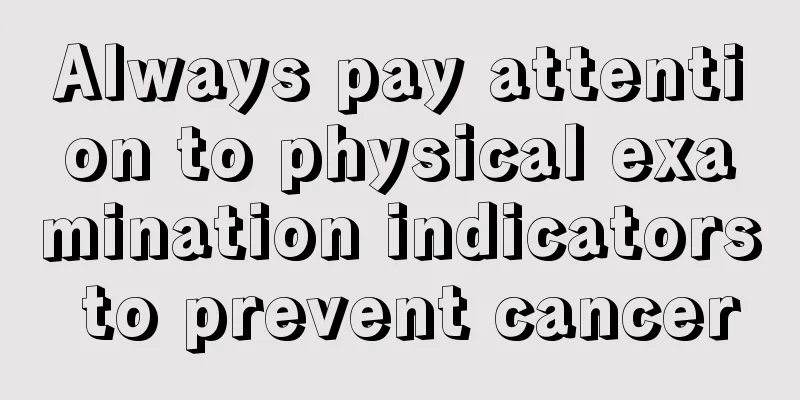Axillary chest pain

|
If you have pain on the side of your chest under your armpit, you need to determine whether it is caused by a heart disease. Some pleurisy and chest diseases can also cause chest pain symptoms. Once it occurs, you must go to the hospital for treatment immediately and receive oxygen to prevent any symptoms of breathing difficulties during the onset of the disease. You should also pay more attention to rest. 1. If you suspect an angina attack, immediately administer oxygen, rest, and take nitroglycerin sublingually. 2. For chest pain caused by pleurisy or pleural disease, you can use a wider abdominal belt to fix the chest wall at the painful area to reduce the movement of the chest during breathing. 3. Go to the hospital immediately for an electrocardiogram and X-ray examination to confirm the diagnosis and receive treatment directed at the cause. 4. Take painkillers appropriately. 1. Nature and characteristics of chest pain 1 Characteristics of chest pain Chest pain caused by chest wall diseases is clearly localized and may be accompanied by redness, swelling, tenderness, rash, and deformity. 2 Nature of chest pain The chest pain caused by intercostal neuritis is paroxysmal and stabbing. Esophagitis causes burning pain. Tearing pain is common in dissecting aneurysms. 3. Location of chest pain: Pain behind the sternum is common in angina pectoris. Left anterior chest pain can also be angina pectoris, myocardial infarction, or left-sided pneumonia. Chest pain radiating to the left shoulder is often angina pectoris. (II) Common diseases that cause chest pain 1 Pleural diseases such as pleurisy and spontaneous pneumothorax. The chest pain caused by these diseases is related to breathing and coughing. Chest pain worsens with deep breathing and coughing, often accompanied by difficulty breathing. Chest pain is localized to the side of the lesion. 2 Cardiovascular diseases are represented by angina pectoris and myocardial infarction, followed by pericarditis. This type of chest pain often manifests as compressive, stuffy, or even tearing pain in the precordial area and behind the sternum. It often radiates to the left shoulder, neck and inner side of the left arm, and is accompanied by shock symptoms in severe cases. 3. Intercostal neuritis, herpes zoster, and esophagitis can all cause chest pain. Herpes zoster causes severe chest pain that runs along the intercostals, and dense small blisters appear on the skin after 1 to 2 days. 4 Certain abdominal organ diseases cause chest pain, such as subphrenic abscess, acute cholecystitis, and acute pancreatitis. 5 Chest trauma is common in rib fractures. There is a history of chest trauma and chest pain worsens when breathing or coughing. (III) Emergency measures for severe chest pain (1) If you suspect an attack of angina pectoris, immediately administer oxygen, rest, and take nitroglycerin sublingually. (2) For chest pain caused by pleurisy or chest wall disease, a wider abdominal belt can be used to stabilize the chest wall at the painful area to reduce the movement of the chest during breathing. (3) Go to the hospital immediately for an electrocardiogram and X-ray examination to confirm the diagnosis. Treatment is directed at the cause. (4) Take painkillers appropriately. |
<<: Can I eat winter melon if I have high uric acid?
>>: The benefits of boiling pears in water
Recommend
How can thyroid cancer be treated? What are the methods of TCM to treat thyroid cancer?
When thyroid cancer occurs, you can choose Wester...
Who is not suitable to eat avocado
Generally speaking, most people can eat avocados....
Who is prone to thyroid cancer
Who is prone to thyroid cancer? Although the inci...
What should I do if I have nasal congestion, dizziness and fatigue?
I believe everyone has experienced a cold, but of...
How to quickly turn yellow soles white
White sneakers have been very popular in the past...
What are the early symptoms of colon cancer
Colon cancer is a common digestive tract malignan...
What are the symptoms of acute gastroenteritis
Patients with acute gastroenteritis often show sy...
Will orthodontic correction make teeth loose?
Although teeth grow inside our mouths, once they ...
Back scraping order
Gua Sha is a traditional Chinese medicine therapy...
How to ventilate a room that is not ventilated?
In real life, the different structures of many ro...
Can stomach cancer be cured?
Gastric cancer is a common malignant tumor of the...
Is ascites contagious?
Ascites is a very common disease in life. It is d...
Bacterial vaginitis can actually cause these complications!
Bacterial vaginosis is one of the most common gyn...
Tips for meeting your mother-in-law for the first time
If your relationship develops to the point where ...
The world is spinning, I feel sick and want to vomit and sweat
Dizziness, nausea and sweating are three of the m...









